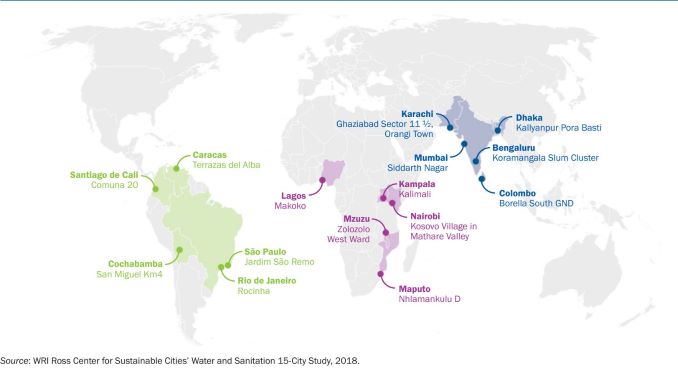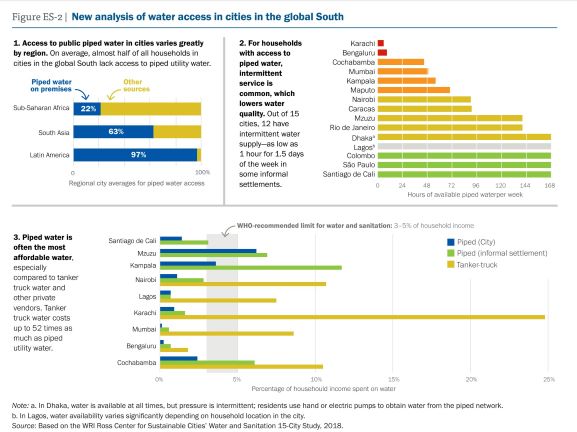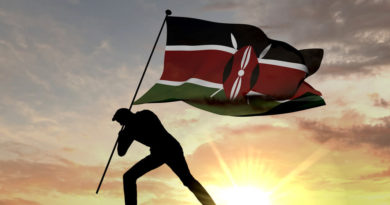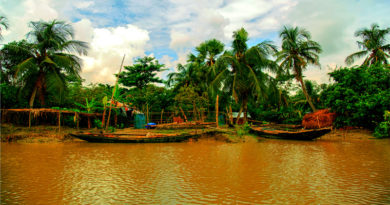Chennai Like Water Crisis Imminent in Bengaluru
 The geographic location of the 15 cities and informal settlements where water data were collected
The geographic location of the 15 cities and informal settlements where water data were collected
In 2015 both WHO and UNICEF had reported that over 90% of the world population has used improved drinking water source.
The Urban Water Crisis Is Underestimated
In WRI’s analysis of 15 global cities in the global south, including two from India, however, points to the opposite direction. The analysis brought an uncomfortable truth to the surface. More than 50 million people residing in these cities lack safe, reliable and affordable water. The report denoted the urban water crisis worsening with time as many ‘day zeros’ may be approaching in various cities and countries.
Many of the world’s major cities in Africa, Southeast Asia, and South America, like Lagos, Mumbai, São Paulo and Caracas are falling dangerously behind in their efforts to provide residents with safe water.
It concluded that 42% of households in those cities lack access to in-house piped water, which is considered to offer the best chance of a reliable, safe and cheap water supply compared to public taps, surface water, bottled water or other sources. In 12 of the 15 cities, piped water was frequently intermittent, which increases the odds of contamination. Across all three regions, the total number of urban residents lacking access to piped water has increased by more than 200 million since 1990, the report found.
The situation was dire in the African cities, which also included Nairobi, Kenya; Kampala, Uganda; Maputo, Mozambique; and Mzuzu, Malawi. Overall, fewer than one-quarter of those households had access to piped water. In Lagos, for example, more than 60% of households relied on groundwater wells and captured rainwater; in Kampala, most households relied on public taps. According to United Nations data analyzed in the report, the portion of the continent’s total urban population lacking access to piped water has increased from 57% to 67% since 1990.

Indian cities Mumbai and Bengaluru staring at Chennai like Water Crisis
Out of 15 cities, India’s Bengaluru is the second city which has the lowest access to piped water after Karachi from Pakistan, according to the report. The report said, “Two of the cities with the lowest water availability were Karachi, Pakistan, and Bengaluru, India, which experienced water access for an average of two hours per day over three days.”
The city of Bengaluru has experienced increased flooding, dry wells, and decreased water availability from the Cauvery basin over the past few years. Karnataka’s three-year drought is associated with 35% less rainfall and “unofficial rationing” in Bengaluru. Some informal neighborhoods now receive water for less than two hours per day, with reduced pressure and poorer quality. In response, households turn to tanker trucks that source their water from boreholes. Poorly monitored tankers have over-extracted groundwater, causing both the utility and illegal vendors to drill deeper.
The report adds that with the urban expansion and more unplanned settlements, the number of under-served areas is increasing. The challenge for Bengaluru is to achieve integrated water management, which includes improving source protection, groundwater recharge, and drainage management, as well as reducing nonrevenue water.
The way ahead
- Cities and water utilities should extend the formal piped water network to improve water access.
- Cities and water utilities need to address intermittent water service.
- Cities and water utilities need to pursue diverse strategies to reduce the cost of water for the lowest-income consumers
- Local and national governments need to support informal settlement upgrading to improve water access to the urban under-served in the short and medium terms.
The report in its conclusion said that Water sources are depleted around the world due to the combination of climate change, pressure from urban population growth, and changes to the natural and built environments. Many households are not connected to the piped network, and many of those that are connected lack a continuous supply of water. Meanwhile, insufficient attention has been paid to issues of water affordability. Given this, extending the piped water network within cities and ensuring there are adequate supplies of piped water is the best way to provide residents with the safest water at the lowest price.
To read the report in detail click here




